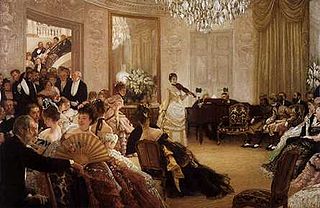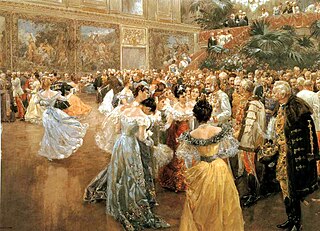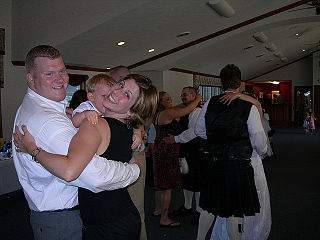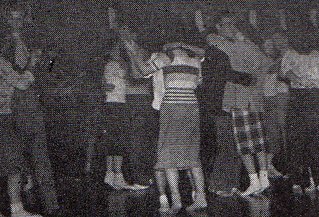 W
WAyr Pavilion is a former music venue and multi-purpose hall in Ayr, Scotland, situated on Ayr's Low Green. As of 2020, it is used as "Pirate Pete's Family Entertainment Centre".
 W
WClub drugs, also called rave drugs, or party drugs are a loosely defined category of recreational drugs which are associated with discothèques in the 1970s and nightclubs, dance clubs, electronic dance music (EDM) parties, and raves in the 1980s to today. Unlike many other categories, such as opiates and benzodiazepines, which are established according to pharmaceutical or chemical properties, club drugs are a "category of convenience", in which drugs are included due to the locations they are consumed and/or where the user goes while under the influence of the drugs. Club drugs are generally used by teens and young adults. This group of drugs is also called "designer drugs", as most are synthesized in a chemical lab rather than being sourced from plants or opiates.
 W
WCutting in is a process, in dancing, by which a person interrupts two dance partners and claims the partner of one. As traditionally portrayed in Hollywood films, men are more likely to cut in than women.
 W
WDance etiquette is the set of conventional rules which govern the social behavior of social dance by its participants. Such rules include the way in which the participants should look and the way in which they approach, dance with and leave their partner. Etiquette can vary in its specification and stringency between different styles of dance.
 W
WDisco is a genre of dance music and a subculture that emerged in the 1970s from the United States' urban nightlife scene. Its sound is typified by four-on-the-floor beats, syncopated basslines, string sections, horns, electric piano, synthesizers, and electric rhythm guitars.
 W
WA doof or bush doof is a type of outdoor dance party generally held in a remote country area, or outside a large city in surrounding bush or rainforest. Originating in the post-punk electronic music scene of Melbourne, Australia in the early 1990s, events referred to as doofs are now held worldwide and have built from a small set of social groups to a subculture with millions of active members worldwide, considered by some as a full blown culture similar to raves or teknivals. Doofs generally have healing workshops, speakers, art, live artists and DJs playing a range of electronic music, commonly goa, house, dub techno, Techno, acid heavy sounds and psychedelic trance.
 W
WA father-daughter dance is a dance between a father and his daughter. Father-daughter dances are common at wedding receptions in the United States although not all weddings have a father-daughter dance. In situations where a daughter's father is not available, he may be substituted with a man of an older generation, such as an uncle or the father of a close friend. Father-daughter dances are very common at quinceañeras and debutante balls. A common trend in 2018 at wedding receptions is to only have a formal first dance for the wedding couple and party songs, forgoing the father-daughter dance.
 W
WThe first dance is an element in a number of traditions, being an opening of a certain dance function: ball, prom, wedding, etc.
 W
WGavari, also spelt Gavri, is a 40-day long festival celebrated in July and September of each year in the Mewar region of Rajasthan, India.
 W
WGloving is a form of modern dance which involves the use of fingertip light- emitting diode (LED) lights to accentuate fun creative patterns.
 W
WHip-hop dance is a fusion dance genre that incorporates elements of popping, locking, breaking, jazz, ballet, tap dancing and other styles and is typically performed to hip-hop, R&B, funk, electronic or pop music.
 W
WThe History of Hip-Hop dances encompasses the people and events since the late 1960s that have contributed to the development of early hip-hop dance styles, such as uprock, breaking, locking, roboting, boogaloo, and popping. African Americans created uprock and breaking in New York City. African Americans in California created locking, roboting, boogaloo, and popping—collectively referred to as the funk styles. All of these dance styles are different stylistically. They share common ground in their street origins and in their improvisational nature of hip hop.
 W
WA mixer dance, dance mixer or simply mixer is a kind of participation dance in a social dance setting that involves changing partners as an integral part. Mixing can be built into the dance choreography or can be structured to occur more randomly. Mixers allow dancers to meet new partners and allow beginners to dance with more advanced dancers. Some people may take advantage of mixers to assess dance skills of other persons without fear of being stuck with a poor match for an entire dance.
 W
WRogers v. Grimaldi, 875 F.2d 994 is a trademark and intellectual freedom case, known for establishing the "Rogers test" for protecting uses of trademarks that implicate intellectual freedom issues.
 W
WA slow dance is a type of partner dance in which a couple dance slowly, swaying to the music. This is usually done to very slow-beat songs, namely sentimental ballads.
 W
WA sock hop or sox hop, often also called a record hop or just a hop, was an informal sponsored dance event for teenagers in mid-20th-century North America, featuring popular music.